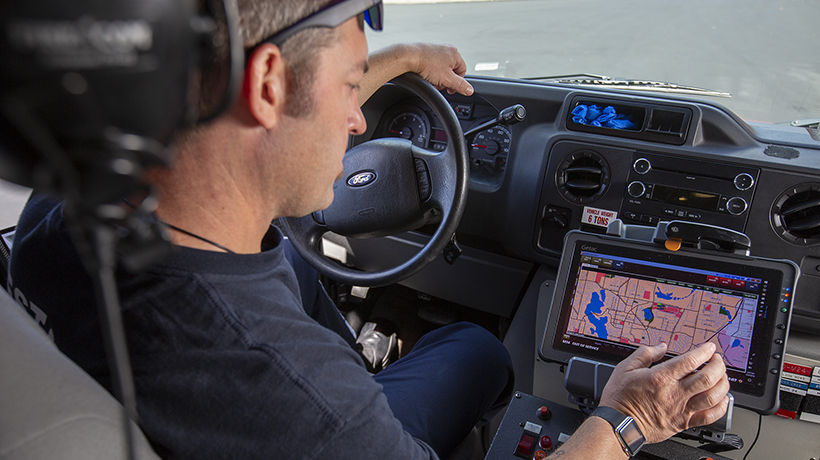Whether it’s a severe weather event or a political rally gone awry, unplanned incidents and emergency situations can quickly arise, becoming unmanageable just as fast.
Less than a decade ago, many agencies were – and some still are – reliant on outdated incident management and incident command systems that used spreadsheets, checklists, and assorted paper print-outs to deploy, monitor, and manage an emergency response effort. Although radio and email communication were ubiquitous, disparate data sources and inadequate mass notification tools meant an effective, coordinated response was largely unattainable.
Today, technology is helping to eliminate the inefficiencies caused by paper-based systems and the lack of shared resources. Reliable new web-based solutions are helping to support the planning and response needs of law enforcement, fire, and rescue services, allowing multiple agencies to share information seamlessly using a common operating picture.
Arguably the biggest leap forward in emergency response has been mobile technology. Through mobile dispatching and handheld devices, emergency coordination and collaboration has increased significantly, giving first responders the ability to send and receive updates from wherever they happen to be. Even volunteers can share and receive vital information, leading to better, safer event resolution at a fraction of the time.
Here’s a brief look at how mobile technologies can aid first responders during a crisis or major event.
1. Communicating and Assigning Tasks to First Responders
Emergency response applications have come a long way. When these applications are paired with mobile technologies, assigning tasks and issuing orders can be done remotely, instantly freeing up first responders to head straight to the scene or where they’re needed most. Whether they’re using a tablet, laptop, or smartphone, first responders can send and receive communications, check the status of tasks, and stay more informed about the progress of other agencies during the life cycle of an incident.
2. Notifying and Updating the Public with Social Media
Floods, fires, and other natural disasters can happen quickly, often with little notice. With millions of people carrying smartphones with social media apps installed on the device, it might be quicker and easier to notify and inform citizens using social media. Through alerts and updates sent via social media, the community can be notified instantly of threatening conditions in ways that exceed the reach of broadcast communication. Citizens can take steps in advance to minimize casualties and damage to property.
3. Maintaining Service and Managing Expectations
Given today’s heightened connectivity, public safety and emergency response agencies are not only tasked with achieving and maintaining high levels of service, but also managing the expectations of citizens demanding more transparency and precision. Beyond that, there are also the mandates from public officials and regulators. New forms of technology, including IP, emergency response applications, and mobile devices, can have a positive impact on how agencies efficiently operate despite narrowing budgets and rising staffing pressures.
Public safety mobile technologies have the potential to transform how police and law enforcement agencies respond to calls to service, search and receive critical information in the field, streamline operational workflows, and engage with the public. Mobility is everywhere. Usage will only grow as these devices become more integrated into day-to-day policing and public safety workflows.
Find out how Hexagon’s mobile solutions can help your agency. Check out HxGN OnCall field mobility solutions.















